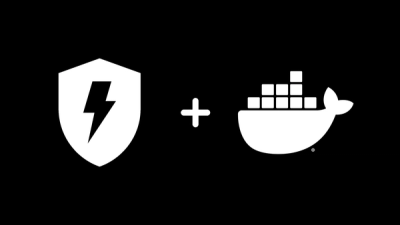go-mysql
A pure go library to handle MySQL network protocol and replication.



How to migrate to this repo
To change the used package in your repo it's enough to add this replace directive to your go.mod:
replace github.com/siddontang/go-mysql => github.com/go-mysql-org/go-mysql v1.4.0
v1.4.0 - is the last tag in repo, feel free to choose what you want.
Changelog
This repo uses Changelog.
Content
Replication
Replication package handles MySQL replication protocol like python-mysql-replication.
You can use it as a MySQL slave to sync binlog from master then do something, like updating cache, etc...
Example
import (
"github.com/go-mysql-org/go-mysql/replication"
"os"
)
cfg := replication.BinlogSyncerConfig {
ServerID: 100,
Flavor: "mysql",
Host: "127.0.0.1",
Port: 3306,
User: "root",
Password: "",
}
syncer := replication.NewBinlogSyncer(cfg)
streamer, _ := syncer.StartSync(mysql.Position{binlogFile, binlogPos})
for {
ev, _ := streamer.GetEvent(context.Background())
ev.Dump(os.Stdout)
}
for {
ctx, cancel := context.WithTimeout(context.Background(), 2*time.Second)
ev, err := s.GetEvent(ctx)
cancel()
if err == context.DeadlineExceeded {
continue
}
ev.Dump(os.Stdout)
}
The output looks:
=== RotateEvent ===
Date: 1970-01-01 08:00:00
Log position: 0
Event size: 43
Position: 4
Next log name: mysql.000002
=== FormatDescriptionEvent ===
Date: 2014-12-18 16:36:09
Log position: 120
Event size: 116
Version: 4
Server version: 5.6.19-log
Create date: 2014-12-18 16:36:09
=== QueryEvent ===
Date: 2014-12-18 16:38:24
Log position: 259
Event size: 139
Salve proxy ID: 1
Execution time: 0
Error code: 0
Schema: test
Query: DROP TABLE IF EXISTS `test_replication` /* generated by server */
Canal
Canal is a package that can sync your MySQL into everywhere, like Redis, Elasticsearch.
First, canal will dump your MySQL data then sync changed data using binlog incrementally.
You must use ROW format for binlog, full binlog row image is preferred, because we may meet some errors when primary key changed in update for minimal or noblob row image.
A simple example:
package main
import (
"github.com/siddontang/go-log/log"
"github.com/go-mysql-org/go-mysql/canal"
)
type MyEventHandler struct {
canal.DummyEventHandler
}
func (h *MyEventHandler) OnRow(e *canal.RowsEvent) error {
log.Infof("%s %v\n", e.Action, e.Rows)
return nil
}
func (h *MyEventHandler) String() string {
return "MyEventHandler"
}
func main() {
cfg := canal.NewDefaultConfig()
cfg.Addr = "127.0.0.1:3306"
cfg.User = "root"
cfg.Dump.TableDB = "test"
cfg.Dump.Tables = []string{"canal_test"}
c, err := canal.NewCanal(cfg)
if err != nil {
log.Fatal(err)
}
c.SetEventHandler(&MyEventHandler{})
c.Run()
}
You can see go-mysql-elasticsearch for how to sync MySQL data into Elasticsearch.
Client
Client package supports a simple MySQL connection driver which you can use it to communicate with MySQL server.
Example
import (
"github.com/go-mysql-org/go-mysql/client"
)
conn, _ := client.Connect("127.0.0.1:3306", "root", "", "test")
conn.Ping()
r, _ := conn.Execute(`insert into table (id, name) values (1, "abc")`)
println(r.InsertId)
println(r.AffectedRows)
r, err := conn.Execute(`select id, name from table where id = 1`)
defer r.Close()
v, _ := r.GetInt(0, 0)
v, _ = r.GetIntByName(0, "id")
for _, row := range r.Values {
for _, val := range row {
_ = val.Value()
if val.Type == mysql.FieldValueTypeFloat {
_ = val.AsFloat64()
}
}
}
Tested MySQL versions for the client include:
Example for SELECT streaming (v1.1.1)
You can use also streaming for large SELECT responses.
The callback function will be called for every result row without storing the whole resultset in memory.
result.Fields will be filled before the first callback call.
var result mysql.Result
err := conn.ExecuteSelectStreaming(`select id, name from table LIMIT 100500`, &result, func(row []mysql.FieldValue) error {
for idx, val := range row {
field := result.Fields[idx]
}
return nil
}, nil)
Example for connection pool (v1.3.0)
import (
"github.com/go-mysql-org/go-mysql/client"
)
pool := client.NewPool(log.Debugf, 100, 400, 5, "127.0.0.1:3306", `root`, ``, `test`)
conn, _ := pool.GetConn(ctx)
defer pool.PutConn(conn)
conn.Execute() / conn.Begin() / etc...
Server
Server package supplies a framework to implement a simple MySQL server which can handle the packets from the MySQL client.
You can use it to build your own MySQL proxy. The server connection is compatible with MySQL 5.5, 5.6, 5.7, and 8.0 versions,
so that most MySQL clients should be able to connect to the Server without modifications.
Example
import (
"github.com/go-mysql-org/go-mysql/server"
"net"
)
l, _ := net.Listen("tcp", "127.0.0.1:4000")
c, _ := l.Accept()
conn, _ := server.NewConn(c, "root", "", server.EmptyHandler{})
for {
conn.HandleCommand()
}
Another shell
mysql -h127.0.0.1 -P4000 -uroot -p
//Becuase empty handler does nothing, so here the MySQL client can only connect the proxy server. :-)
NewConn() will use default server configurations:
- automatically generate default server certificates and enable TLS/SSL support.
- support three mainstream authentication methods 'mysql_native_password', 'caching_sha2_password', and 'sha256_password'
and use 'mysql_native_password' as default.
- use an in-memory user credential provider to store user and password.
To customize server configurations, use NewServer() and create connection via NewCustomizedConn().
Failover
Failover supports to promote a new master and let other slaves replicate from it automatically when the old master was down.
Failover supports MySQL >= 5.6.9 with GTID mode, if you use lower version, e.g, MySQL 5.0 - 5.5, please use MHA or orchestrator.
At the same time, Failover supports MariaDB >= 10.0.9 with GTID mode too.
Why only GTID? Supporting failover with no GTID mode is very hard, because slave can not find the proper binlog filename and position with the new master.
Although there are many companies use MySQL 5.0 - 5.5, I think upgrade MySQL to 5.6 or higher is easy.
Driver
Driver is the package that you can use go-mysql with go database/sql like other drivers. A simple example:
package main
import (
"database/sql"
_ "github.com/go-mysql-org/go-mysql/driver"
)
func main() {
dsn := "root@127.0.0.1:3306?test"
db, _ := sql.Open(dsn)
db.Close()
}
We pass all tests in https://github.com/bradfitz/go-sql-test using go-mysql driver. :-)
Donate
If you like the project and want to buy me a cola, you can through:
 | [ |
Feedback
go-mysql is still in development, your feedback is very welcome.
Gmail: siddontang@gmail.com







